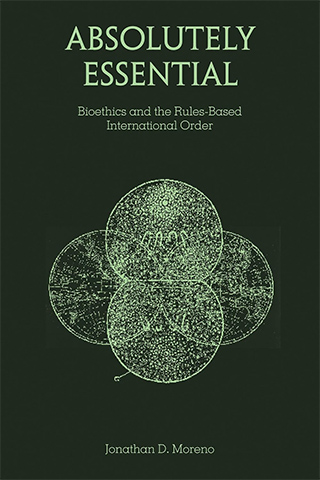The Rise and Unraveling of America’s Science Pact

The American scientific community is experiencing a moment of collective trauma. The assumptions about the relationship between the federal government and the science establishment, especially as mediated by the great research universities, are no longer reliable, if they ever were.
What is puzzling is how so many smart people failed to appreciate the unique vulnerability to political fortune of the system of funding science in America that has prevailed since the 1940s.

Science leaders often voice their shock and grief by pointing to what feels like a broken bargain. Since World War II, the system of federally funded research has been credited with powering American prosperity and global influence. These advantages have not only been measurable in flourishing economic growth and an unrivaled military. They have also stimulated the creation of novel and world-leading technologies from atomic power to the internet and biotechnologies. American science has helped produce the “soft power” of innovation engines like the entertainment industry that has served as inspiration to anyone in the world with access to a screen or a radio, the most effective and sustained projection of a national idea in history.
This success rested on an implicit and largely merited confidence in government’s role as a steward of knowledge. That role runs deep in U.S. history. Thomas Jefferson’s patent law signaled the young republic’s commitment to invention, while the Articles of Confederation stressed the importance of reliable weights and measures for a stable economy, today embodied in the critically important National Institute of Standards and Technology. In 1807, the Coast and Geodetic Survey became the first federal science agency, ensuring safe navigation along America’s shores and, with it, the foundations of trade and national sovereignty.
The federal role was not always welcomed by the states. Bridges and tunnels and technologies like the railroad and the telegraph bound the country closer together but also challenged the power of individual states. Through much of the first half of the 19th century congress debated the implications of “internal improvements,” a question that the Civil War largely put to rest.
So extreme is this embarrassment within the political class that it has eclipsed even the personal fears of disability and death among legislators who control the dollars.
During the war, President Lincoln established a National Academy of Sciences to advise him on the most promising military armaments. Later, amid deep resistance by gilded age interests, a professional civil service was put in place along with intensified regulation of financial markets. Often the apparent stability provided by these arrangements proved illusory, as in the case of the Great Depression, but they created an opening for the most radical expansion of federal power in U.S. history: Franklin Roosevelt’s New Deal.
Suspicions that the new physics could lead to the engineering of the most powerful weapon in history reached the leadership of the most powerful countries at about the same time. But it was the United States that most effectively seized the opportunity. Great Britain had the intellectual capability but lacked the material resources and scale required to put the atomic bomb plan into action. At first, many academic leaders hesitated to allow government funding to shape their research agendas. But the urgency of war and the sheer availability of cash to finance their research endeavors and grow their faculty proved irresistible.
The undeniable success of this massive engineering effort formed the principle case study for presidential advisor Vannevar Bush’s argument that science could provide an “endless frontier” for American dominance in the post-War era, one with no end in sight and no immediate competitor, especially considering the devastation of the other great powers after 1945. The key ingredient, one that seemed blindingly obvious, was the organized and relatively predictable governmental support of research institutions. For more than a century the frontier image was also a political powerful one among the narrators of American manifest destiny, including President Kennedy’s New Frontier and the heralding of space as the last frontier. It was also resonant with the somewhat fuzzy notion of an American dream founded on opportunity amid greater affluence.
At mid-century, direct federal investment in transportation and education was accompanied by indirect investment in science and technology, especially in the expanded National Institutes of Health and the National Science Foundation. In turn, those organizations dispersed funds to the most promising ideas as determined by scientists and engineers themselves. In a sense, it all seemed to unfold with an air of inevitability.
But here is where some of the peril lay dormant in a society that has always displayed a conservative streak, one suspicious of elites and central government. When disaster struck, whether in financial markets or public health, those doubts came alive.
What American science leaders and the community of science advocates failed to perceive, this writer included, was the fragility of the alliance between government and science, and more particularly between politicians and scientists. As unfair as the perception might be — and it is wildly unfair — the alleged failure of the scientific establishment during the pandemic did the one thing that much of the political system could not endure: embarrassment about the confidence it had entrusted in these elites.
So extreme is this embarrassment within the political class that it has eclipsed even the personal fears of disability and death among legislators who control the dollars that could (and unarguably have) lead to new treatments for the diseases that will ultimately threaten them and their families, not to mention their constituents. Convenient and vague promises of efficiencies and discoveries afforded by AI provide the excuse of the moment. That may be an attractive play for the short-termism of venture capital, but cancer, stroke, heart disease, dementia and the next pandemic virus aren’t waiting for the next killer algorithm.
Thus American science finds itself in a kind of interregnum. The old world will not return; the new world must now be built. But no one can yet say how or when.
Jonathan D. Moreno is the David and Lyn Silfen University Professor Emeritus at the University of Pennsylvania. He is the author of “Absolutely Essential: Bioethics and the Rules-Based International Order.”



